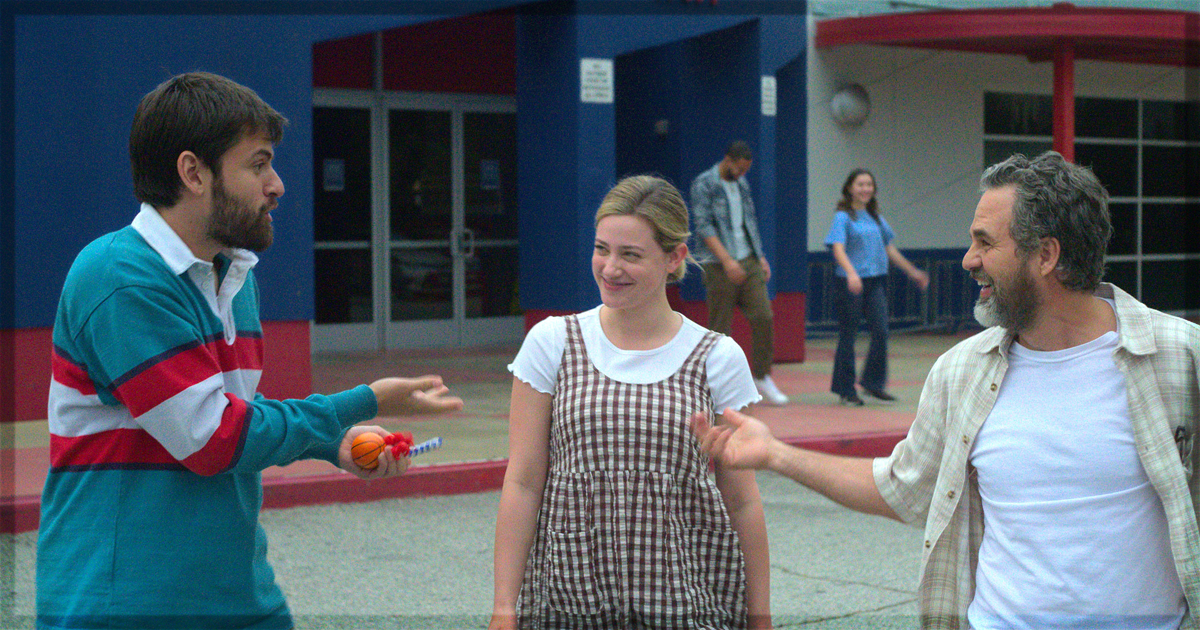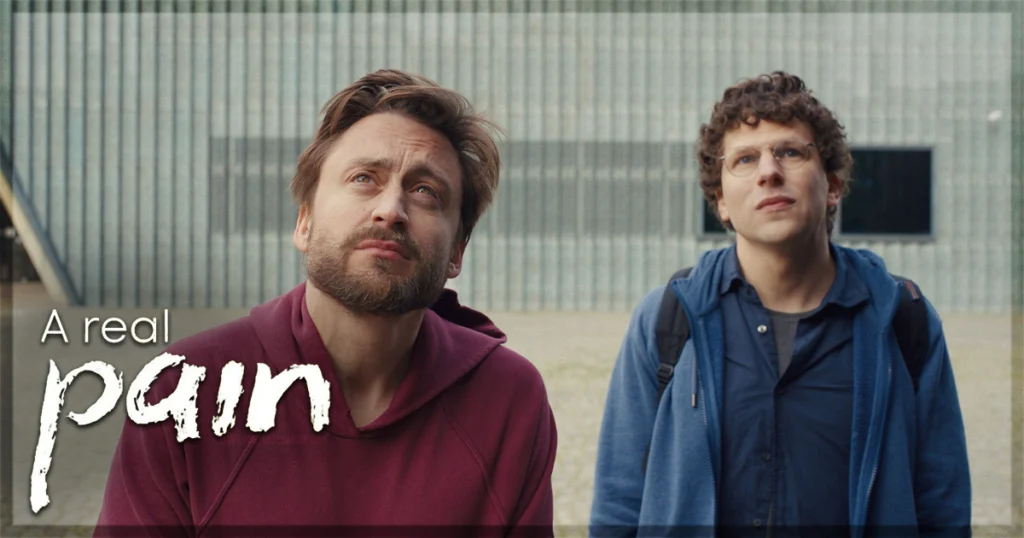Of the three plus years of the virtual Sundance I have attended, 2025’s felt like the weirdest yet. The films had varying qualities of success, varying from good middling to downright bad. As the festival progressed, I began to think this was the weakest year yet. That is until I saw what was quickly my favorite title amongst Sundance this year. But the strange thing is that it was not a film, but a television series! It feels weird to say that in discussing a highly popular festival, “mostly” beloved by film fans. But that does lead to a more significant discussion (that we won’t have here) regarding television becoming a better medium than cinema for storytelling. It’s certainly something to chew on in the ever-evolving entertainment media landscape. That sentiment shined brightly after I saw Cooper Raiff’s eight-episode series Hal & Harper.
The story follows siblings Hal (Cooper Raiff) and Harper (Lili Reinhart) and their lives with their single father (Mark Ruffalo). After reading this description, this could sound like a typical independent media schlock to some. Instead, the series, also created by Cooper Raiff, applies a clever twist. Reinhart and Raiff also portray the 7-year-old and 9-year-old versions of Hal & Harper. It’s a narrative gamble that pays off in the series in impressive ways.
Raiff’s script wisely understands the type of story it wants to tell. Instead of melodrama, Raiff treats it with an authentic human emotionality. Every character in the series is plagued by grief that manifests differently. In some entertainment media, this could mean that some characters may become villains while others become heroes. Instead, our three central characters are injected with an actual emotional center. They’re all imperfect but trying to be their best selves for each other while finding their ways in the world. To best explain this, the three central performances must have their own discussions.
I want to start with Cooper Raiff’s performance as the kind yet immature Hal. On paper, this character could come off as grating. His immaturity and puppy dog-like qualities could feel like a “friend” you can’t get rid of. Instead, Raiff envelops Hal with profound compassion for those around him. Simultaneously, he shows that such compassion is a disservice to his dealings with his trauma and general immaturity. We care about Hal as a viewer and want him to be happy. That is especially true when he meets a possible love interest, Abby (Havana Rose Liu.) At this same time, Raiff wisely balances the depth of his central characters. He never once hogs the spotlight, giving the terrific supporting cast moments to shine.
Full disclosure: I have never seen an episode of Riverdale, so I did not correctly gauge Lili Reinhart’s acting abilities. She proves herself a revelation throughout these eight episodes. She perfectly balances the protective sister quality while trying to find her independence. Harper loves her family but is pulled in multiple directions of wanting a life outside of them. Viewers feel the dilemma through Reinhart, making us engaged in the moral quandary she faces. It makes for an incredibly compelling journey for Harper that Reinhart manages to keep viewers involved in. Anytime she and Raiff simply riff on screen together, it is joyous. When they butt heads, we can feel their pain in equal measure.
On the other hand, Mark Ruffalo’s performance as their father comes from a different perspective. He’s a character that is riddled with pain and simply struggles to be a parent of two. At the same time, you can tell his deep love for his children, merely wanting to give his best self to them. Ruffalo applies a combination of vulnerability and warmth that makes me happy every time he is on screen. Seeing that pain in Hal & Harper’s younger years makes the later portion even more compelling and emotional. He showcases another layer when he remarries Kate (Betty Gilpin, who is also excellent). While he still has pain (sometimes that pain shines through), Ruffalo has someone to balance himself against. Kate can hold him to task, creating an engaging back-and-forth. It crafts a character (technically two characters) that feels like a real person growing and changing through life.
Watching these characters’ journeys simply becomes more enjoyable as it goes. Viewers feel rewarded when the series ends, seeing that a semblance of the piece has been found. I believe it was easy to forgive some cheesier moments throughout my viewing. You could feel disappointed if you do not like these kinds of indie drama and coming-of-age stories. There’s a simplicity that some could find underwhelming. I bring this up for some because specific dramatic sequences could be considered melodramatic. Thanks to these performances, I never once felt that melodrama. Instead, this is a story of actual human trials and turbulent tribulations of the thing we call life.
If you could not already assume, I loved Hal & Harper. The series has a seamless balance of heart, humor, and drama, led by engaging characters. From the start of the younger years to the modern day, viewers care about the challenges they face and the joys they experience. Raiff wisely jumps back and forth in time, filling in their past and present. Both pieces feed into one another, delivering something with humanity. I cared about all of these people and wanted them to achieve the happiness they deserved. It was a thoroughly enjoyable and emotional journey that kept me involved from beginning to end. I can’t wait for Hal & Harper to find distribution because this Sundance 2025 series deserves more eyes on it.
Hal & Harper recently screened at Sundance.
Learn more about the indie TV series at the Sundance site for the title.


